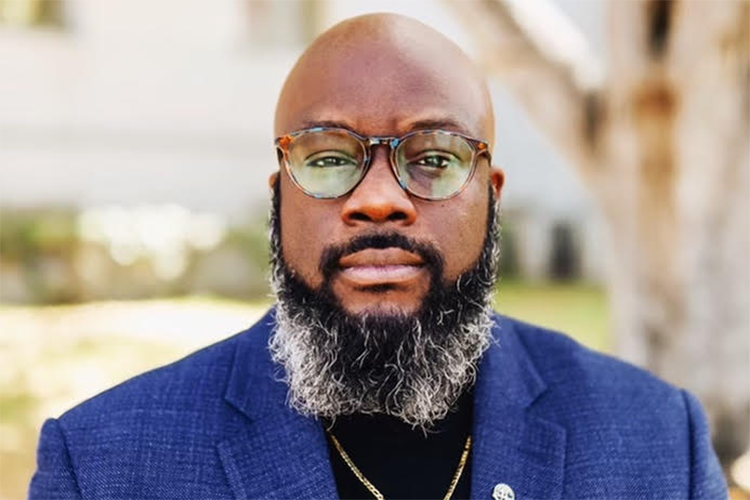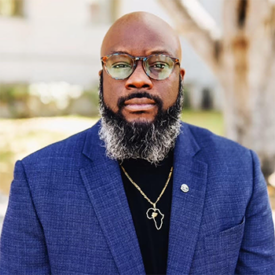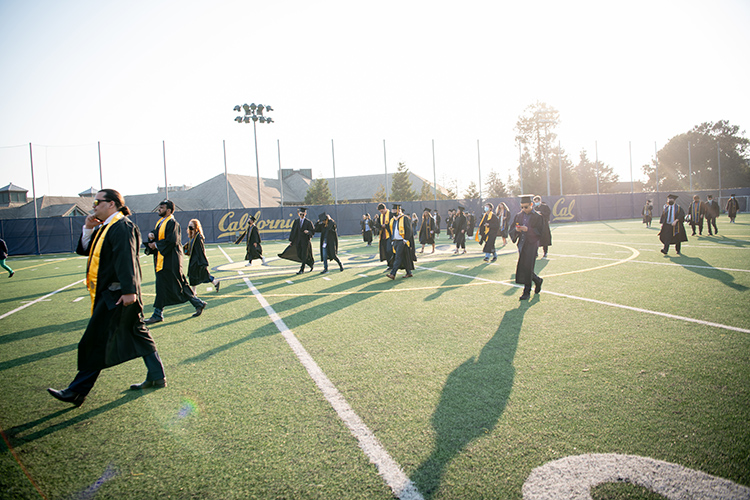Affirmative action: What can other schools learn from UC Berkeley’s experience?
UC Berkeley's admissions dean to fellow universities, colleges: "If you are dedicated to having a diverse student population, get ready to do a lot more work."

June 29, 2023

Thousands of guests attended UC Berkeley’s main commencement for graduates in 2023. In the years since the passage of Prop. 209, UC Berkeley has taken meaningful steps to boost the diversity of the student body. (UC Berkeley photo by Keegan Houser)
Building diversity has been a top priority for Olufemi “Femi” Ogundele, UC Berkeley’s associate vice chancellor of enrollment and dean of undergraduate admission. He has worked at UC Berkeley since January 2019. In the Q&A below, Ogundele talks about the effect of Proposition 209 on the UC system, the steps Berkeley has taken in recent years to boost the diversity of its student body, and how academic excellence and diversity are possible — with hard work.
Berkeley News: California voters banned the consideration of race, ethnicity and gender in college admissions in 1996. What was the immediate impact at UC Berkeley and at the other nine campuses in the UC system?

Olufemi “Femi” Ogundele is UC Berkeley’s associate vice chancellor of enrollment and dean of undergraduate admission. (Photo by Andy Myers)
Femi Ogundele: I was not working at UC Berkeley when Proposition 209 went into effect — I started here in 2019. However, it has been well documented that there was a sharp drop-off in diverse student enrollment, especially among Black and Latinx students on UC campuses and, more dramatically, at UC Berkeley and UCLA.
Research shows that, over time, UC has spent many millions of dollars and tons of time and efforts to increase diversity in race-neutral ways and yet has found no single method that led to pre-Prop. 209 diversity numbers.
UC campuses, including Berkeley, have made notable improvements in more recent years. I am proud of the successful diversity efforts at Berkeley, but I am also aware that the percentage representation of Black and Latinx students at Berkeley lags the percentage of those students graduating from California high schools. These students, especially Black students at selective UC campuses, such as Berkeley, are often the only members of their race in their courses, which brings with it many challenges regarding inclusion and finding community. The UC’s president and all of its chancellors filed an amicus brief on the two court cases, and it documents the various efforts to increase diversity and the shortfalls.
What can other colleges and universities learn from Berkeley’s experience? How did Berkeley improve its numbers?
When I arrived at Berkeley in 2019, I focused on what could be done within Prop. 209.
Given today’s ruling, admissions officials will need to talk with their attorneys about what is in bounds and what is not. Legal counsel will be really important.
Prop. 209 banned the consideration of race and ethnicity in the college application review process. However, other activities, such as recruitment, to reach certain populations for racial, geographic and economic diversity, as part of overall diversity efforts, were allowed.
Once I was clear on what we could do, I applied the insights I had gained from years doing diversity outreach work at selective private and public universities, including elite ones. At Berkeley, this meant changing our processes from top to bottom. Critical to the success of this effort has been the leadership of Chancellor Christ, who made campus diversity a priority through various initiatives, and the dedication and commitment of faculty, staff and students who shared their insights and helped lead as we executed this new approach.
So, my guidance to officials at other colleges and universities is simple: If you are dedicated to having a diverse student population, get ready to do a lot more work. Merely talking about a commitment to diversity will not be enough. Signals that state what you value are not systems.
These officials should also understand that a student’s first-generation status or low socio-economic status is not a proxy for race. In addition, the UC experience has shown that there is no single race-neutral approach that will yield the desired diversity results. There is no magic bullet.
What matters is much more work toward understanding a student applicant’s context. The experience of a student applicant from one school cannot be compared apples to apples with that of a student from another school. The many K-12 experiences and opportunities across our nation cannot be apples to apples. If you recognize that, you know that we need to understand excellence within that context. It is not always a perfect GPA or flawless transcript and AP scores.

“Although it takes work and commitment, academic excellence and diversity is possible,” Ogundele said. (UC Berkeley photo by Keegan Houser)
Admissions staff will need to lean in and learn about the individuals in their applicant pool — a student’s neighborhood, access to courses at high school, strength of the community’s Wi-Fi networks, how all of these interact to create the learning environment the student is navigating, and what it means to be outstanding in that environment, to name just a few things.
At Berkeley, we changed the order of what we read first in an application file so that we understand who the applicants are, as indicated in their essays and other applicant areas before we get into what they have achieved, in terms of GPA and scores on AP exams. Everyone who reads and scores applications must undergo many hours of evaluation training and bias training so that they fairly assess each applicant.
In addition, our marketing and outreach efforts underwent a number of changes as we sought to reach out to a broader range of high schools and counselors and make clear that we value these students and what they have to offer the Berkeley campus.
We made a host of changes in all aspects of our work, including outreach to underresourced K-12 schools, where there are often few college counselors.
All of us, faculty and staff, continue to research and calibrate ourselves and educate as many others as we can. There is no substitute for doing this comprehensive work.
What other insights are important to keep in mind about building diversity without affirmative action?
The impact of COVID-19 will linger for years to come. It’s important to remember that the pandemic had a disproportionate impact on low-income people and communities of color. Returning from the pandemic, those same students returned to under-resourced middle schools and high schools. When those students approach our applicant pool, what will we do about it? How will we take these events into context? How do we make sure that those students are considered fairly?
Although it takes work and commitment, academic excellence and diversity is possible. Often, it is said the two are in competition or tension. I don’t believe that to be true. At Berkeley, we have increased diversity and our academic markers have not shifted.
I believe institutions are better, and Berkeley is better, having a diversity of students from a variety of backgrounds.